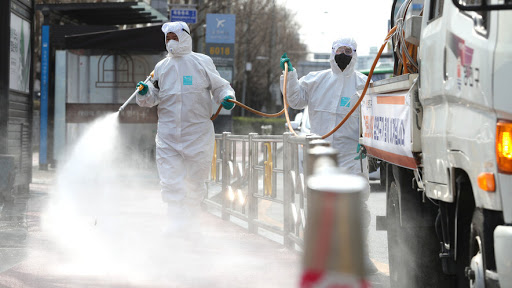On November 22, an anonymous user posted about the dangers of the chemicals used for COVID disinfection in dorms on Everytime, a student community app. The post mentioned that the school uses a product called “ZAPS Green Pure Liquid”, which is a disinfectant consisting mainly of benzalkonium chloride. According to the Material Safety Data Sheet (MSDS) report of the used disinfectant, which was attached to the post, the chemical is toxic when inhaled. The poster also mentioned how they had a sore throat everytime the room was sprayed, and believed that the toxicity of the disinfectant liquid contributed to the abnormal throat condition.

The post quickly gained traction. In the comments, some argued that while the disinfectant may contain some toxic chemicals, it should be safe to use as it received the Korea Food & Drug Administration’s approval. Meanwhile, others expressed that continuing to use the disinfectant in dormitories when there is a potential danger from inhaling the chemicals neglects the safety of students.
However, another student created another post pointing out the relatively low toxicity level stated in the MSDS report, and how diluting the disinfectant by a factor of 200 should make it safe to spray even in dorm rooms. Moreover, the second post also noted that the students are told to leave their rooms for at least 20 minutes and fully ventilate it, which should greatly decrease the chances of the students directly inhaling toxic chemicals.
The next day, another user posted a snippet of a news article showing the dangers of inhaling benzalkonium chloride, the ingredient of the used disinfectant. The dangers of inhaling the chemical has been researched greatly in Korea, as it was one of the toxic chemicals in humidifier disinfectants, which killed approximately 78 people by 2012. Research conducted by the Ministry of Environment concluded that inhaling benzalkonium chloride can negatively affect the respiratory system.
As many students doubted the safety of disinfectant liquids being sprayed inside dorm rooms, the Undergraduate Association (UA) uploaded a post addressing the issue on November 23. This stated firstly, that “ZAPS Pure Green Liquid” is a disinfectant recommended by the Central Disaster and Safety Countermeasures Headquarters, and that the liquid was diluted by a factor of 200 before being sprayed. Moreover, although the method employed — spraying the disinfectant into each room — is not exactly in line with the recommended method — spraying then wiping with dry cloth — because a large number of rooms had to be disinfected by a limited number of staff, the school had no other feasible choice but to spray the disinfectant. The sprayed liquid evaporates quickly from surfaces and thus should not be very toxic as long as the room is ventilated for 15 to 20 minutes. The KAIST administration admitted that the safety announcements were not coherent enough, and that they will improve the clarity soon.
On December 1, the UA announced that the school will stop COVID disinfection in student dorm rooms, while common areas will continue to be disinfected. From now on, the students are urged to sanitize their own rooms.

